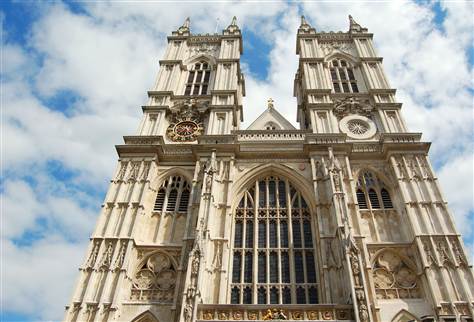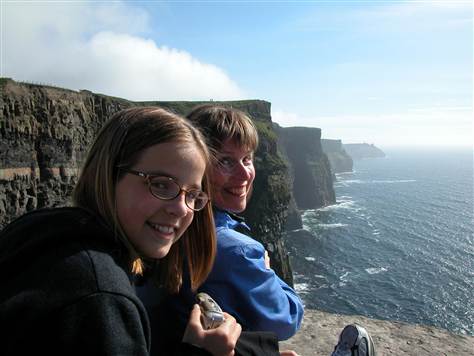What’s new in Britain and Ireland for 2009
This item appears on page 73 of the May 2009 issue.
While updating my guidebooks for 2009, I found plenty of changes in Britain and Ireland.
• Fortunately, one of my favorite offbeat sights in London — the Bramah Museum of Tea & Coffee (www.teaandcoffeemuseum.co.uk) — will reopen later this year. It had closed following the death of its founder, Edward Bramah. He believed that the tea bag, invented in the 1950s to let Brits brew tea during a TV commercial, spelled the death of a good “cuppa.” Aficionados of tea or coffee will find this small, quirky museum fascinating.

• The Monument, central London’s 202-foot column designed by Sir Christopher Wren to mark the spot where the Great Fire of 1666 began, has reopened after a complete makeover. Its 311 steps lead to a city view.
• Somerset House, near Covent Garden, used to house three fine arts museums, but the Hermitage Rooms and Gilbert Collection have closed, and only the Courtauld Gallery of European paintings remains open.
• And this year marks the 300th anniversary of the birth of Dr. Samuel Johnson, who produced the first Dictionary of the English Language. You can expect frenzied mobs of editors, proofreaders and lexicographers descending upon Dr. Johnson’s House (www.drjohnsonshouse.org), in Gough Square, throughout 2009.
• A delight for kids and parents, Pollock’s Toy Museum (www.pollockstoymuseum.com) — a funky old house in north London — is filled with toys that predate batteries and computer chips.
• Also great for kids, Kew Gardens’ (www.kew.org) new Rhizotron and Xstrata Treetop Walkway puts you high in the tree canopy, 60 feet above the ground, on a scenic steel walkway.
• Many of London’s ostensibly “free” sights ask for donations. Rather than donate, my conscience is cool with “giving” money in other ways (such as renting an audio guide, generally around $5, or buying a book in their shop).
• At Westminster Abbey (www.westminster-abbey.org), the excellent new audio guide (narrated by Jeremy Irons) helps take the sting out of a steep admission price of $18, which includes the device. Church entry is still free for legitimate worshipers, but you won’t see the tombs, and officials are wise to camera-toting tourists who try to get in as “worshipers.”
• With the fast-moving, irreverent and entertaining NEW London (www.neweuropetours.eu) free walking tours, you always at least get your money’s worth. Students give 3-hour London tours (“Old City” and “Royal London”) for free, but they push for tips at the end and cross-promote their evening pub crawl.
To see more but hear less, consider Fat Tire Bike Tours (www.fattirebiketourslondon.com), which now offers 4-hour tours by bike in London.
• The Docklands (www.dockland.co.uk), London’s rising Manhattan of skyscrapers, has sprung up east of the city center. It’s bustling with businesses migrating there from downtown London and energized by being near the site of the 2012 Olympics. The pedestrian-friendly highrise office park hosts trendy restaurants, stimulating art, underground malls, peaceful parks, awe-inspiring subway stations and the Museum in Docklands, telling the story of the area when it was the world’s leading port in the 19th century.

• In Bath, a town west of London, the long-awaited Thermae Bath Spa is in its second full year of operation. But if you’ve been to the great spas on the Continent, this one is an overpriced disappointment.
• In Stratford-upon-Avon, in central England, the Royal Shakespeare Company’s home theater is under renovation until 2010, but in the meantime you can see productions in their temporary Courtyard Theatre (www.rsc.org.uk).
• “Save the pasty” is the cry in Cornwall in the southwest. The British government is currently seeking EU protection for the traditional Cornish meat pie. This means that only those pies made in Cornwall using traditional techniques and recipes can be called a “Cornish pasty” (www.cornishpastyassociation.co.uk).
• Edinburgh will host special events this year as Scotland celebrates the 250th birthday of its favorite bard, Robert Burns.
• Expect Edinburgh’s streets to be dug up. A skeptical public seems to regret the huge investment it’s made in a new tram system even before the 2011 opening.
• The Culloden Battlefield (www.nts.org.uk/culloden/home) north of Edinburgh has a new, $10 million visitors’ center. Its 360-degree movie screen surrounds viewers with attacking soldiers, taking you back to 1746 to relive the stirring battle won by the English over the Scottish clans.
• A new seaplane service, Loch Lomond Seaplanes (www.lochlomondseaplanes.com), connects downtown Glasgow and Oban, gateway to the Hebrides islands. While pricey — about $120 one way — the trip takes only 30 minutes and provides a stunning view of the Highlands.
• If you’re in Oban on a weekend, drop by the Skipinnish Ceilidh House (www.skipinnish.com) for Highland storytelling, music and dancing.
• On the west coast of Ireland, one of the great free thrills of travel is no longer allowed. At the Cliffs of Moher, rangers now keep visitors from getting near the edge of the towering cliff that marks the west edge of Europe.
But travel itself remains a thrill. Whether flying low over Highlands, strolling through treetops over Kew Gardens or toasting the birthday of Robert Burns in his hometown, you’ll discover there’s no end to what the British Isles have to offer.
